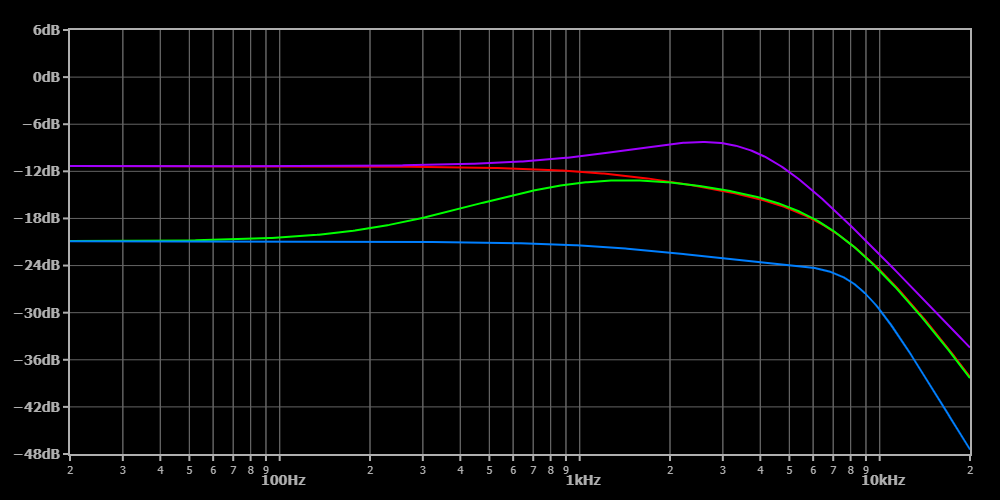Post by Yogi B on Feb 15, 2021 20:27:47 GMT -5
Often we talk about how the resistor in a parallel treble bleed makes a volume pot have a more linear taper, but that's only true if the pot you're starting with is a log pot (it doesn't make sense that you'd somehow be able to make a linear taper pot more linear now does it!). It's probably better to say that a parallel treble bleed makes the taper feel less logarithmic (or more anti-logarithmic).
As a linear taper can be thought of as a midpoint between a log taper and a reverse or (anti-) log taper -- adding the parallel resistor to a log pot does make it closer to a linear taper, but if you're already starting with a linear taper the resistor will make it closer to a reverse log taper.
Therefore, if you're using linear taper pots (or some of those fancy "vintage" 20%-30% (log) taper pots -- though I don't think you can readily get those as push-pulls, so probably not) and want to keep the exact same treble bleed, then the answer is to use log pots.
If, however, you're already using 10% log taper pots there isn't much you can do without changing the values (and thus the response) of the treble bleed.
A series treble-bleed essentially means that bass frequencies are affected per the pot's normal unadjusted taper, whereas treble frequencies are affected per the taper as adjusted by the resistor.
For example below is a plot demonstrating this transition, all four lines represent a vintage PAF type pickup with a 10% log 500k volume pot at 50% rotation, however: the the blue line is a normal response with no extra components; the red line has a 150k resistor adjusting the taper, but no capacitor; the purple line is your current 150k and 1nF in parallel; finally the green line is 150k and 1nF in series.

So whilst you can see that the series treble bleed does give you the unaltered taper for the lowest frequencies, the overall shape of its response is quite different to the parallel treble bleed (and to the full-volume response).
I have read a lot of threads about treble bleeds on this forum. How come I have never come across this before. Did I miss it?


